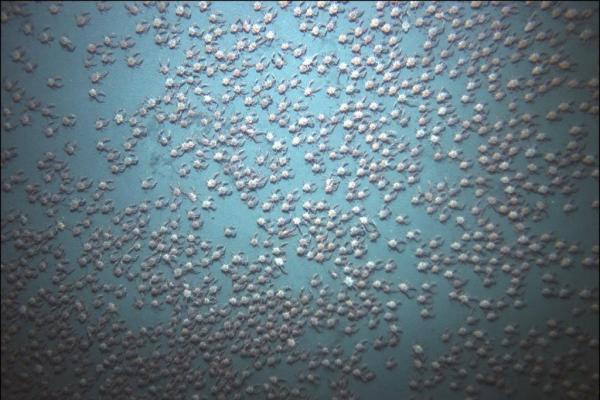
WOODS HOLE, Mass., April 12 (UPI) — While surveying the ocean floor in a manned submersible just off the coast of Panama, a team of researchers spotted thousands of red crabs swarming in the deep, low-oxygen waters. The scientists were able to capture the phenomenon on video.
“When we dove down in the submarine, we noticed the water became murkier as we got closer to the bottom,” Jesus Pineda, a biologist at Woods Hole Oceanographic Institution and lead scientist on the recent expedition, explained in a prepared statement.
“There was this turbid layer, and you couldn’t see a thing beyond it. We just saw this cloud but had no idea what was causing it.”
“As we slowly moved down to the bottom of the seafloor, all of the sudden we saw these things,” Pineda said. “At first, we thought they were biogenic rocks or structures. Once we saw them moving — swarming like insects — we couldn’t believe it.”
DNA testing confirmed the crab species, Pleuroncodes planipes. The red crabs are also known as pelagic red crabs or tuna crabs, and are common along the coast of Baja California. The species has never been observed so far south.
“To find a species at the extreme of their range and to be so abundant is very unusual,” Pineda added.
The encounter — detailed in a paper, newly published in the journal PeerJ — occurred in April of 2015. Just a couple months later, thousands of tuna crabs washed ashore in Orange County, California.
The warm waters of El Nino have inspired a number of strange appearances on the California coast over the last 18 months — with sea snakes, crabs, sea lions, seals, birds and other marine species showing up in places they rarely visit.





